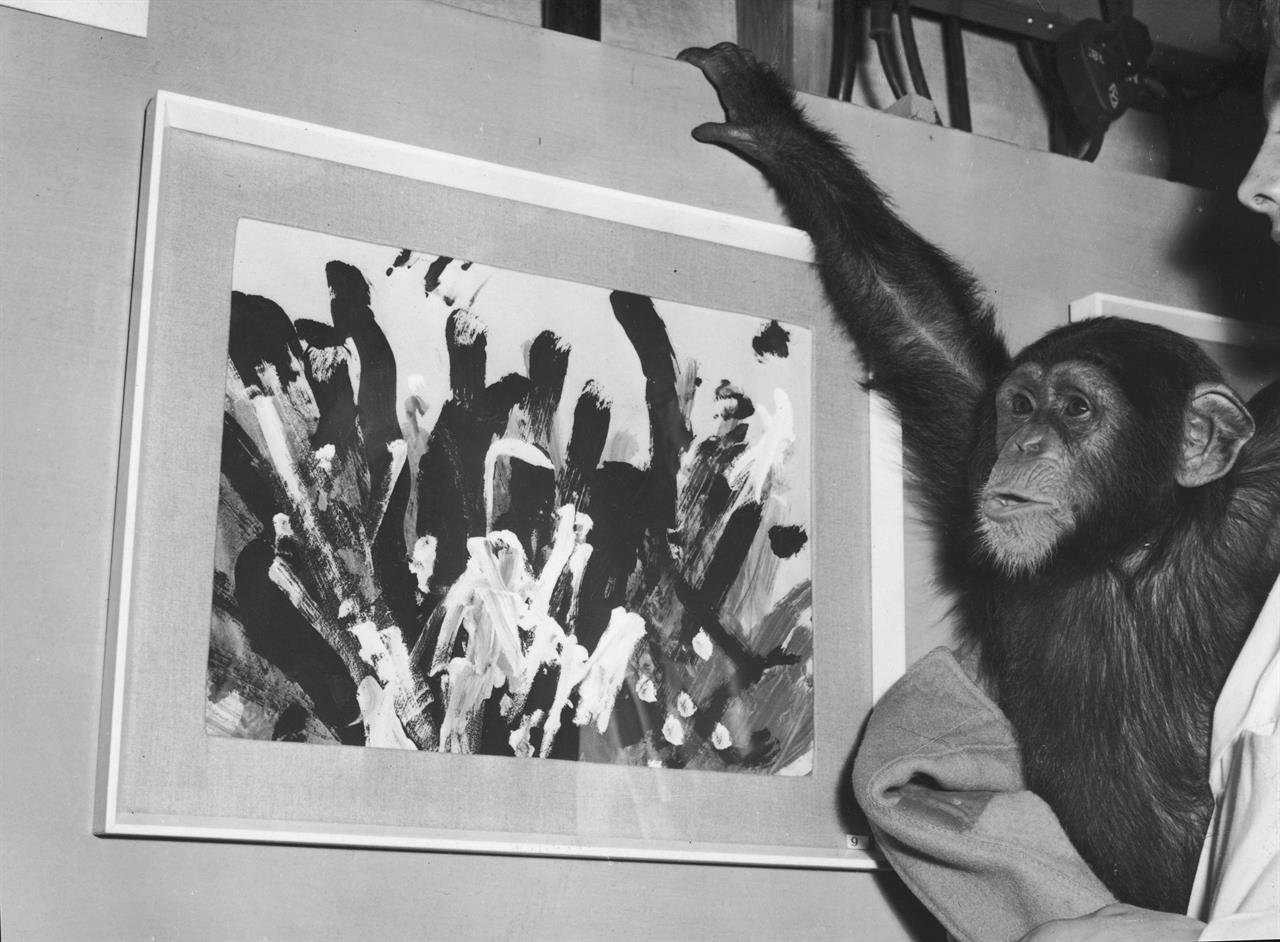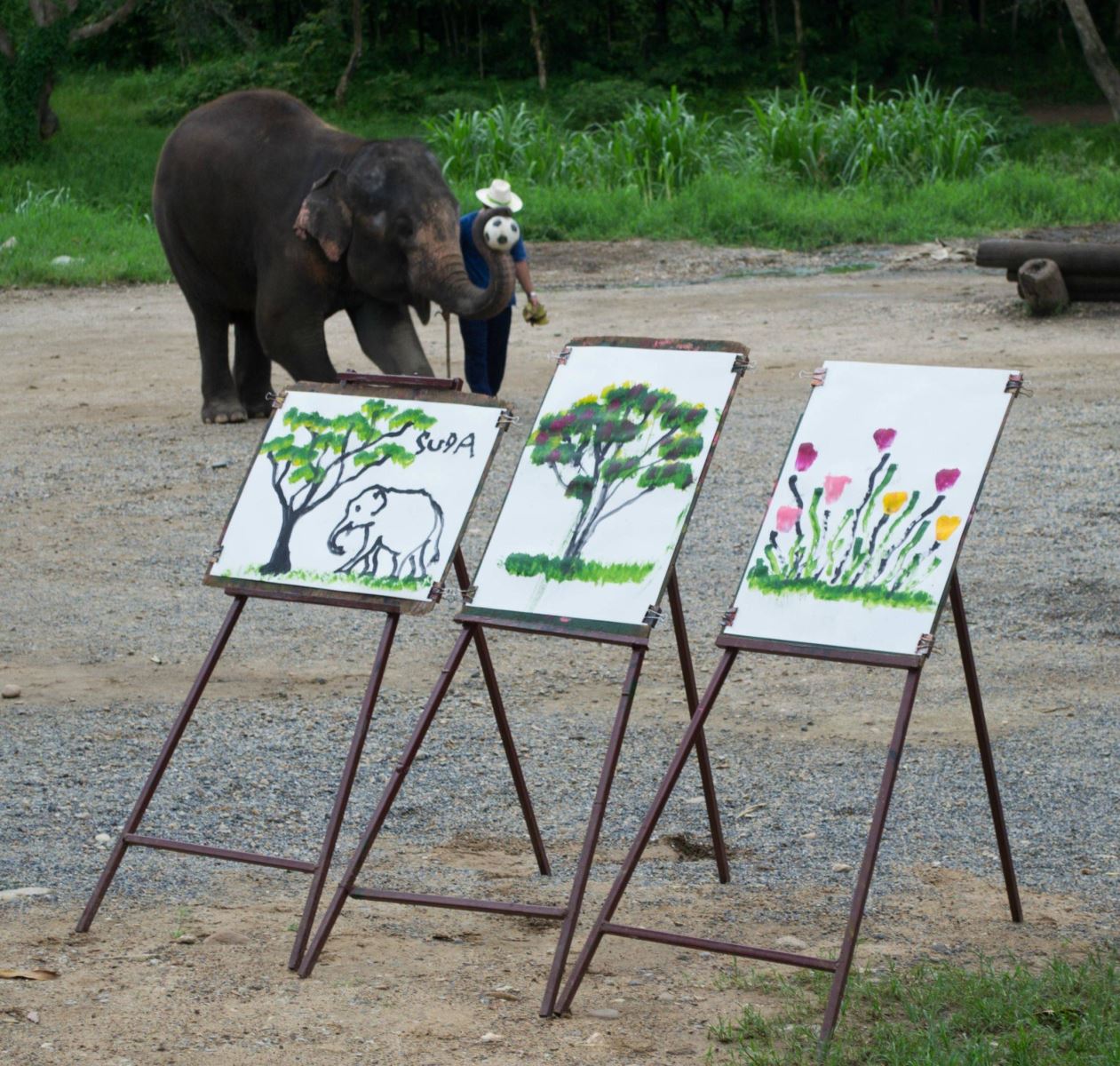When I was surfing the internet searching for a topic to write about in this issue, a clip popped up displaying a young female elephant called Hong in Thailand painting a picture of an elephant running and holding a flower in its trunk. I searched for more similar videos and articles tackling the super phenomena of paintings done by animals to be sure that the video is for real and not fake. What I found was astonishing; animals can be artists, too!
Giving a chimpanzee, an elephant, or any other animal a paintbrush and canvas is not a natural activity at all. Yet, painting is now considered an activity by which animals can exercise their minds, rather than just using their bodies; thus, enriching their boring captivity environment. The idea was initially introduced to stop animals from reverting to repetitive, compulsive behaviors.
A study was performed to determine if painting helps in reducing elephants’ stress levels. No clear evidence suggested a link between elephant painting and a reduction in their stress levels; however, higher stress levels and more anti-social behaviors were observed on days when they did not paint.
Back in the 50s, a chimpanzee called Congo was able to create patterns of lines; he never managed to produce a recognizable pictorial image though. Congo had a creative ability and he himself made all the decisions about where each mark should go. By time, he balanced his patterns making them more complicated, proving that he has the first germ of artistic creativity within his brain.

Another example of animal artists is Metro Meteor; the race horse. After suffering from serious knee injuries while on the racetrack, the artist Ron Krajewski adopted him. The vets told the artist that Metro had only two years left to live, so he wanted to make him as happy as possible. Ron noticed that Metro enjoyed bobbing his head up and down, so he thought that the horse might like to paint with a paintbrush in his mouth.
Metro loved painting and became the best-selling artist at Gallery 30 in Gettysburg, Pennsylvania, gaining enough money to pay for a pioneering treatment for his knee injury. It worked, and Metro is now able to spend a long and contented life at the easel. He has also donated over USD 45,000 from the proceeds of his work to a charity that helps racehorses find good homes.

Talent is not restricted to chimpanzees and horses; dogs can paint too. Dagger, a Black Labrador, was adopted by artist Yvonne Dagger, who welcomed the dog in her studio, where he watched her while she painted. Previously, Dagger learnt how to observe and master human skills; when Yvonne once gave him a paintbrush, he set to work creating his own art. He continued painting, selling more than 150 paintings and raising over than USD 10,000 for charities.
In addition to painting, Dagger was also trained to be a certified therapy dog for Therapy Dogs International Organization (TDI) in Mount Olive, New Jersey—a volunteer organization dedicated to regulating, testing, and registration of therapy dogs and their volunteer handlers for the purpose of visiting nursing homes, hospitals, other institutions and wherever else therapy dogs are needed. Now, Dagger inspires, influences, and comforts people all over the world.
In modern zoos, many elephants paint as part of “enrichment activities”, they paint detailed pictures of trees, leaves, and flowers, as well as colorful abstracts. Occasionally, the keeper replaces the empty brush with a loaded one, and this is the only form of human intervention in the elephant’s painting process.

Nowadays, animal paintings have become an important source of income in most zoos; artworks are sold in zoo gift shops and online, where prices vary and the revenue can be significant. In 20017, for example, paintings by brush-wielding seals at the Virginia Aquarium generated USD 15,000 in less than two years. For a nonprofit organization, every thousand dollars count, and art by animals can be an important source of income indeed.
Watch these vidoes for famous wildlife artists:
The Painting Elephant
Congo the Chimpanzee
Metro Meteor the Horse
Dagger the Dog
References
www.washingtonpost.com
scienceblogs.com
www.palmbeachzoo.org
www.deseretnews.com
www.dailymail.co.uk
www.artistsnetwork.com
www.bbc.com
www.mnn.com
www.huffingtonpost.com.au
listverse.com
www.mondoartgallery.com
www.care2.com
theconversation.com
www.tdi-dog.org
*Published in SCIplanet, Autumn 2018 Issue "Science and Art"